
In recent years, the United States has faced a significant and deadly threat from the giant killer wasp, often referred to as the “murder hornet.” This invasive and highly destructive insect, known as the largest and most dangerous of its kind globally, first appeared in the country in 2019 and has since continued to spread fear and havoc.
The most recent sighting of this menacing creature occurred in Washington state in 2021. This discovery alarmed the region, as the “murder hornet” exhibited aggressive behavior, attacking anything that crossed its path. Measuring an imposing 4.4 centimeters in length, this insect was detected on August 11, just 3.2 kilometers from where it was first identified in December 2019, near Blaine, Washington, according to the Washington State Department of Agriculture (WSDA).
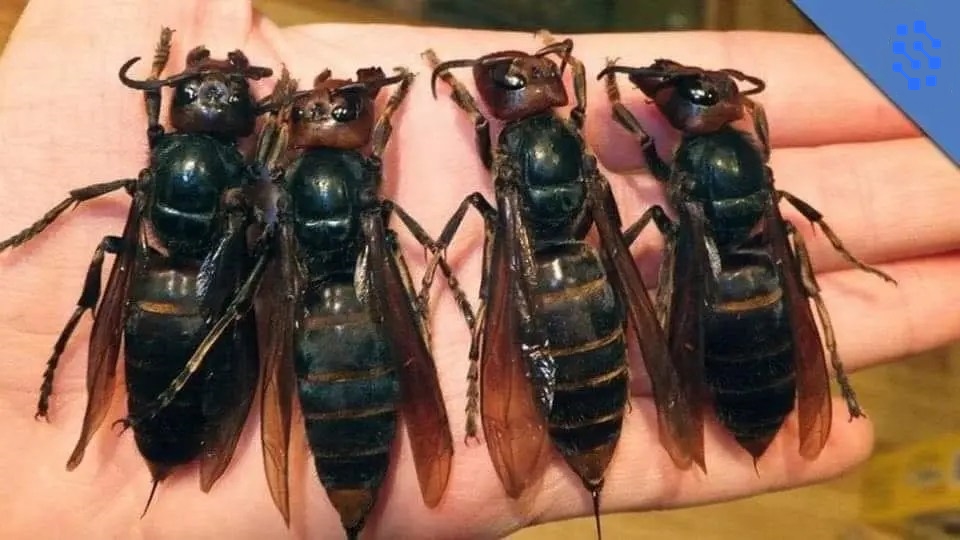
These hornets are notorious for their ability to decimate entire beehives. Their formidable mandibles allow them to kill and decapitate thousands of bees, taking over the hive and defending it as their own. They ruthlessly tear apart the brood to feed their offspring, leaving devastation in their wake. This is especially concerning given the critical role bees play in pollination and maintaining ecological balance.
Adding to the danger, the venom from a single sting of a “murder hornet” has the potential to kill a human. These hornets inject a significant amount of venom into their prey. While fatalities from a single sting are rare, the risk remains significant and alarming.
In response to this development, the WSDA is taking proactive measures to combat the threat. Live traps are being set up in the area, and entomologists plan to tag captured wasps to track them back to their nests. The proximity of this sighting to the US-Canada border has also prompted officials in that region to install additional traps to prevent the further spread of these deadly insects.
The emergence and spread of the giant killer wasp, or “murder hornet,” serves as a stark reminder of the threats nature can pose. With its potential to devastate bee populations and harm humans, efforts to monitor, control, and mitigate this invasive species are crucial to safeguarding both ecosystems and public safety. The ongoing efforts by state and regional authorities highlight the importance of swift and effective action in managing invasive species to protect the environment and human health.
What Might Happen to Your Body If You Start Sleeping Without a Pillow
The first pillows we know of date back to Ancient Mesopotamia. They were made of stone, and only wealthy people could afford them. Unlike ancient stone pillows, the ones we use today are soft and fluffy, and many people can’t sleep without hugging a big cozy pillow. But in fact, sleeping with a pillow may not be the best way to rest, as it can affect your body and your mood.
We at Bright Side understand that it can be difficult to part with your favorite pillow, but sleeping without it has many health benefits, and we did our research to introduce you to some of them.
1. It prevents back pain.

Many pillows can lead to an unnatural sleeping position and the support they provide doesn’t last long. Although the pillow itself won’t cause your back to hurt, it can worsen many of the underlying symptoms. When you sleep without a pillow, your spine can rest and your body is in its natural position.
2. It helps you to deal with neck pain.
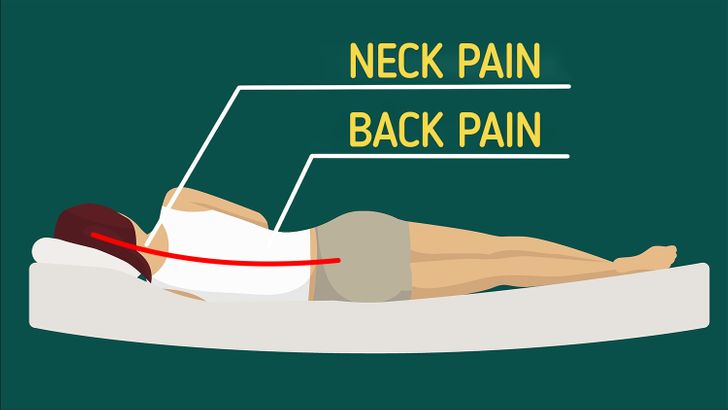
Most pillows can’t help you sleep in the right position, and can even make sleeping postures worse. Bending your neck in any way for a long time will make you uncomfortable, and pillows that are too firm or too soft may lead to neck pain.
3. It combats headaches.
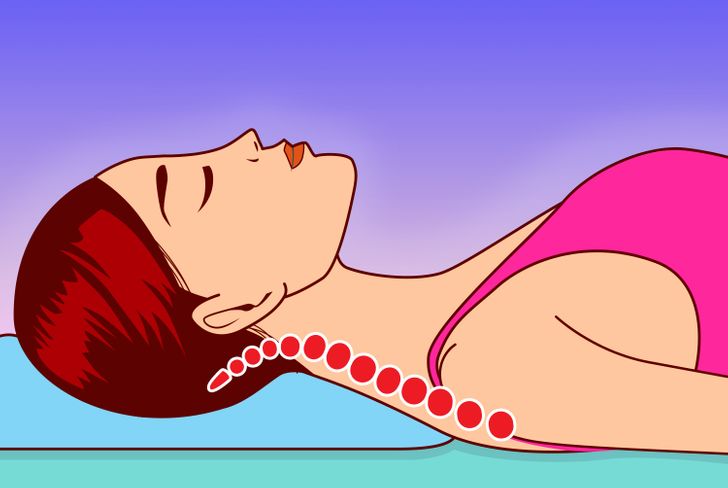
If you’re waking up with a headache or feeling light-headed, your pillow might be to blame. Pillows that are too high cause your head and neck to round forward, and they add more tension to the neck muscles. This might give you a headache in the morning once you’ve gotten out of bed.
4. It may alleviate stress.
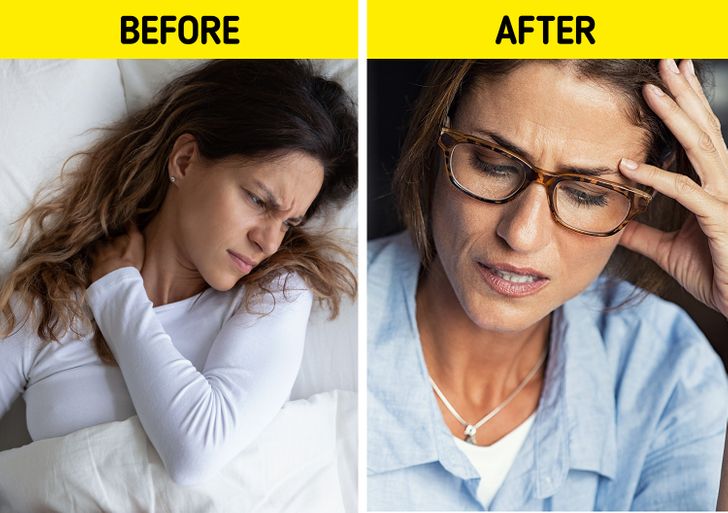
If your pillow makes you uncomfortable at night, you might end up tossing and turning in your sleep. The more sleep disturbances you have, the less time your body has for many important functions that occur during sleep. Constant sleep deprivation can affect your mood and thinking skills, and will cause your body to release more stress hormones during the day.
5. It prevents facial acne.

Your skin will thank you for getting rid of your pillow. Your face is normally pressed on your pillow for most of the time during the night. You probably don’t wash your pillowcase every day, and it collects dirt, oil, and household dust on it. All of this can lead to breakouts, inflammation, and premature wrinkles.
6. It may be good for your hair.
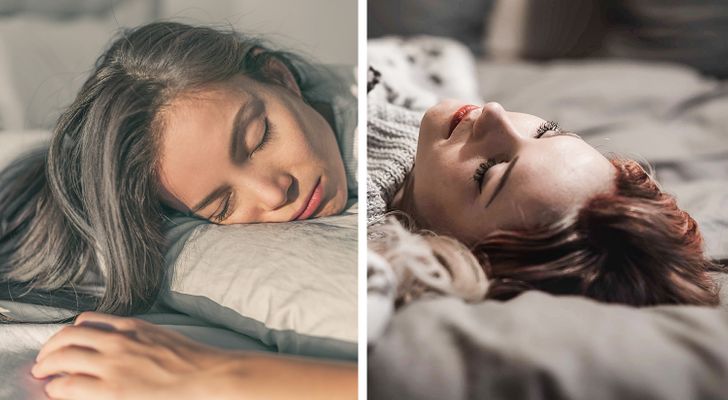
If you’re waking up in the morning with dry and tangled hair, you might want to forgo your pillow for the sake of your locks. When you’re tossing and turning at night, your hair is rubbing against your pillowcase, causing it to break. Pillowcases can also absorb the oils from your hair, leaving it dry and brittle.
Disclaimer: Please remember that this article serves for informational purposes only. In order to get professional advice and a diagnosis, please see your doctor.
Do you sleep with or without a pillow? Have you noticed how it affects you?

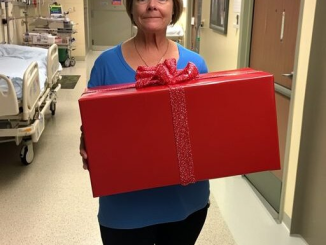

Leave a Reply